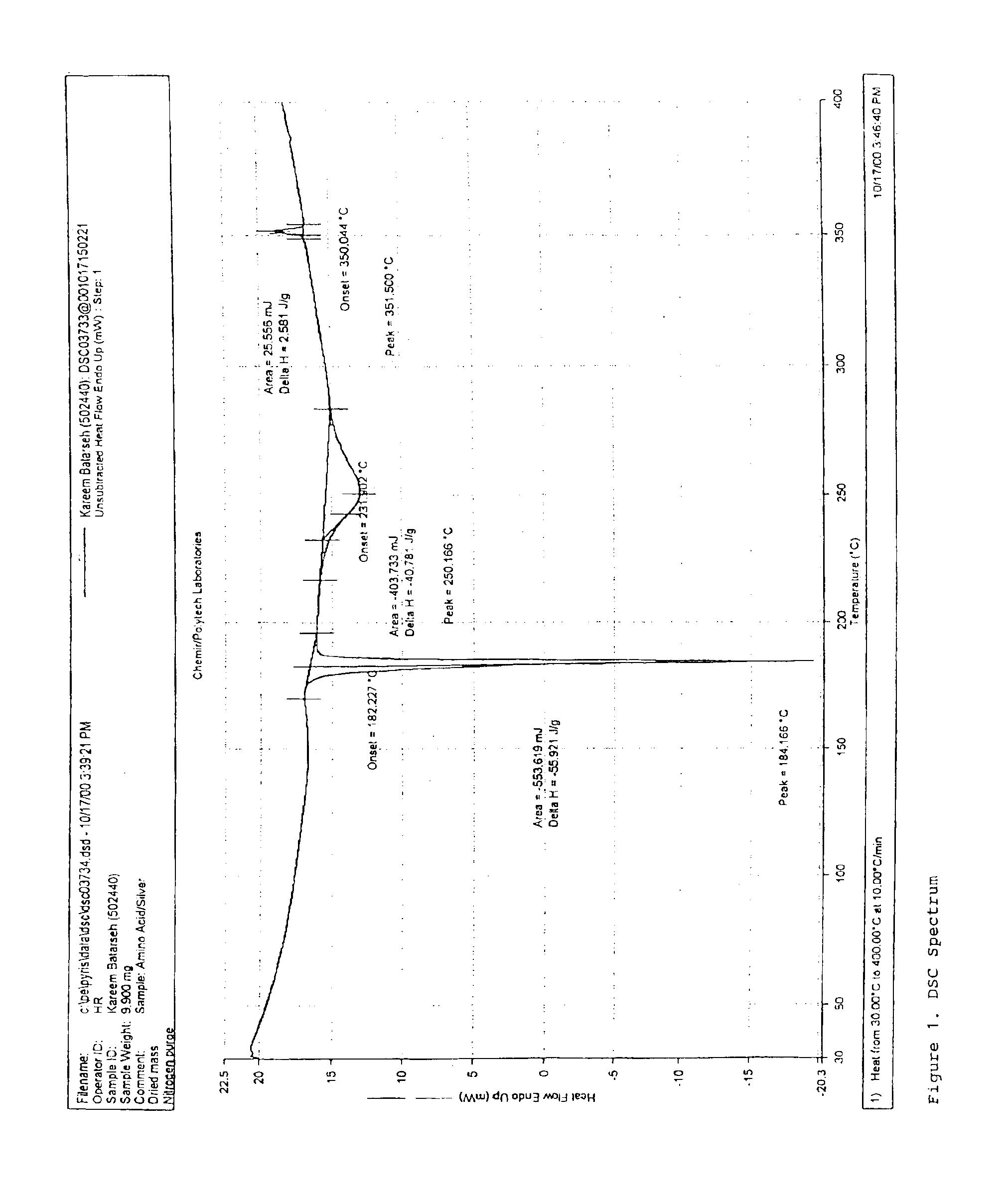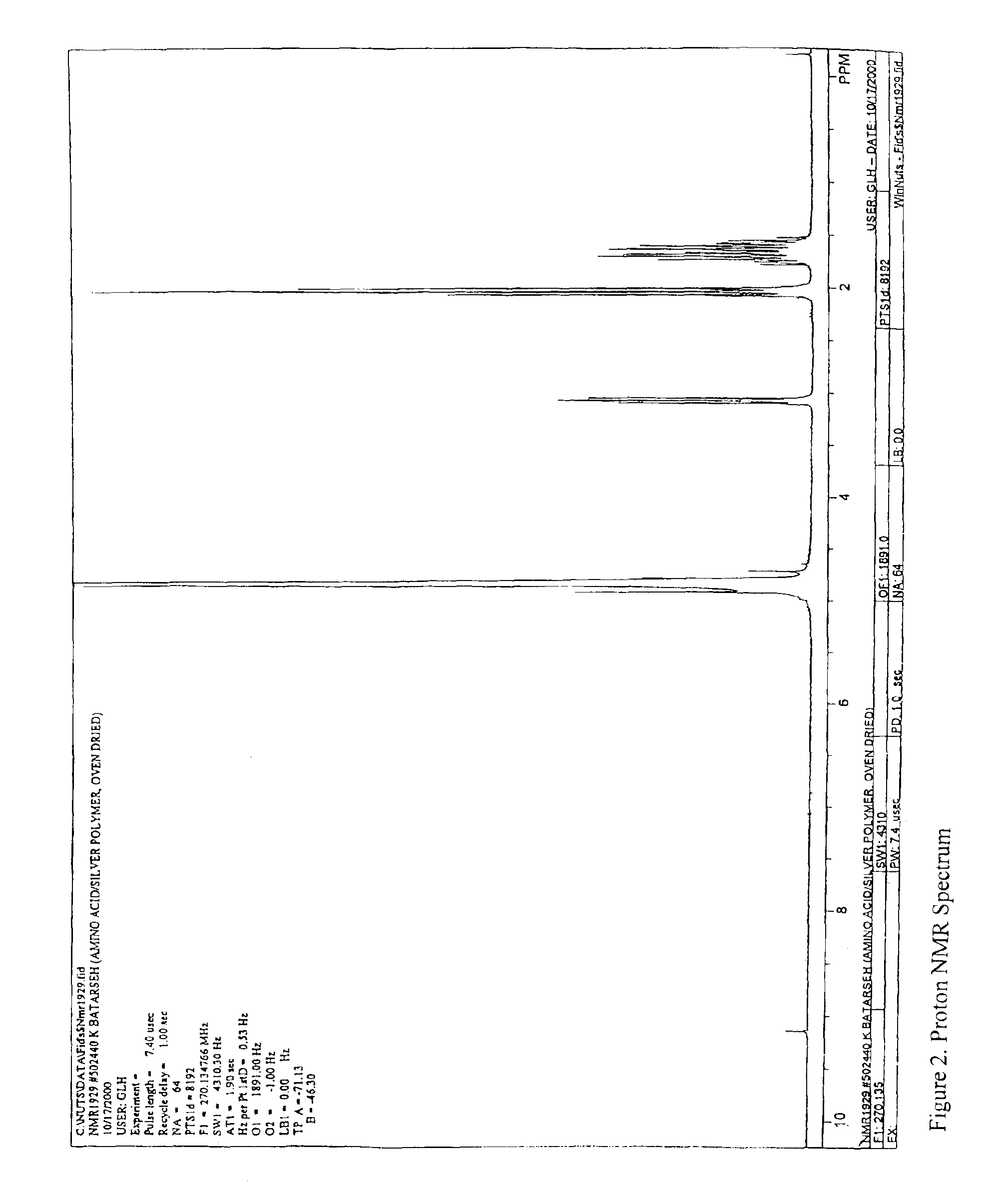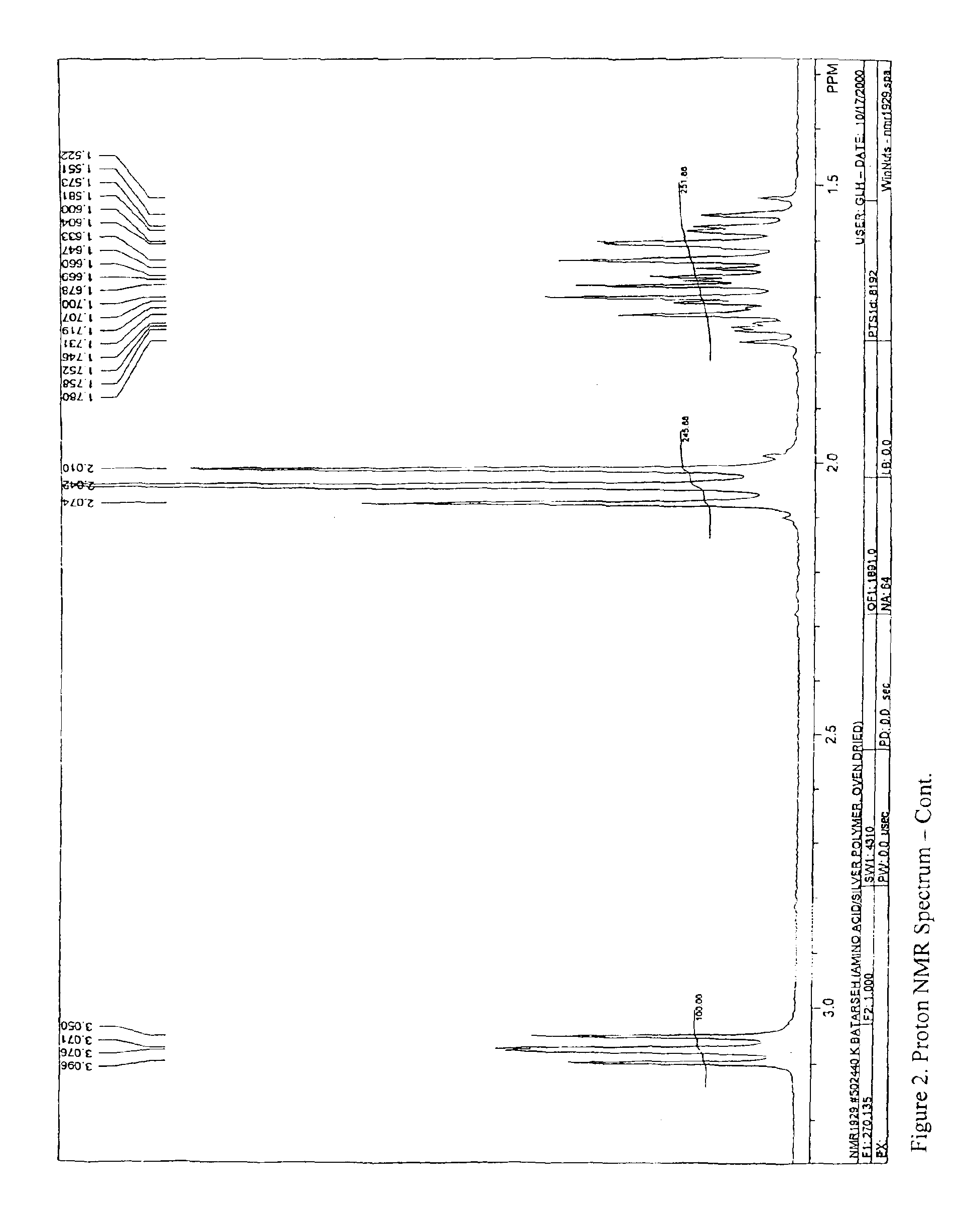Microbicidal formulations and methods to control microorganisms
a technology of microorganisms and formulations, applied in the field of microorganism control, can solve the problems of unambiguously becoming a worldwide problem, unfavorable environmental protection, and unfavorable environmental protection
- Summary
- Abstract
- Description
- Claims
- Application Information
AI Technical Summary
Benefits of technology
Problems solved by technology
Method used
Image
Examples
example 1
Preparation of Silver-glutamic Acid Complex
[0038]By using a micropipet, 230 μl of the above prepared solution was placed in a microtube where 34.61 mg of glutamic acid was added, and the mixture was stirred thoroughly. This amount of glutamic acid represents an equimolar amount of amino acid with respect to the silver ions in the above prepared solution. Instantly, an insoluble material was observed. This insoluble dispersant has microbial killing activities. This prepared solution was then mixed with 50 ml of double distilled-de-ionized water. The solution was mixed continuously until homogenization was achieved. Then, the product was poured into a dark bottle. This desired product can be added to or proportioned into aqueous systems and diluted to achieve the required germicidal potency, depending on its intended use.
example 2
Preparation of Silver-Leucine Complex
[0039]The same procedure in Example 1 above was duplicated, but the amino acid used was leucine instead of glutamic acid. The amount of leucine used in this case was 30.84 mg which again represents an equimolar amount of the amino acid with respect to the silver ions.
example 3
Preparation of Silver-Arginine Complex
[0040]The same procedure from Example 1 was again repeated, but the amino acid used was arginine. The amount of arginine used in this case was 40.97 mg which again represents an equimolar amount.
[0041]To study the effect of hydrogen peroxide on increasing the potency of these disinfectants, the three prepared solutions (Example I-III) were mixed with 50 ml of 50% H2O2 rather than water. Again, these prepared solutions were poured into dark bottles.
[0042]II. Biological
[0043]1. Efficacy of Examples 1-3 Disinfectant
[0044]The above concludes the preparation of these disinfectants. However, to utilize these mixtures as bactericides, 5 ml of each bottled solution was added to 45 ml of double distilled-de-ionized water (10% by volume). Without the presence of H2O2, this constitutes an active concentration of about 51 ppm of complex silver which proved to be sufficient to readily kill bacteria. The upper and lower concentration limits may be different i...
PUM
| Property | Measurement | Unit |
|---|---|---|
| Fraction | aaaaa | aaaaa |
| Fraction | aaaaa | aaaaa |
| Acidity | aaaaa | aaaaa |
Abstract
Description
Claims
Application Information
 Login to View More
Login to View More - R&D
- Intellectual Property
- Life Sciences
- Materials
- Tech Scout
- Unparalleled Data Quality
- Higher Quality Content
- 60% Fewer Hallucinations
Browse by: Latest US Patents, China's latest patents, Technical Efficacy Thesaurus, Application Domain, Technology Topic, Popular Technical Reports.
© 2025 PatSnap. All rights reserved.Legal|Privacy policy|Modern Slavery Act Transparency Statement|Sitemap|About US| Contact US: help@patsnap.com



